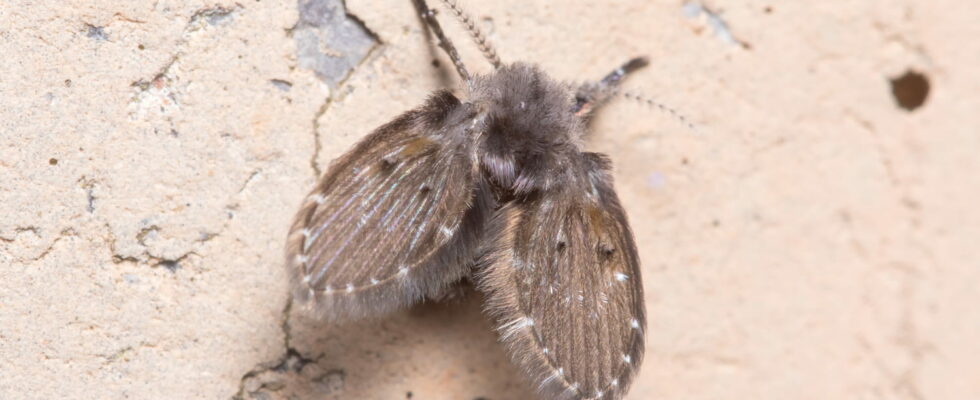Having recently arrived in France, this little creature can cause major inconvenience in your home.
This summer, you may have noticed the presence of tiny insects resembling small moths fluttering in your bathroom or kitchen? These are Psychodidae, commonly called sewer gnats, sewer flies or drain flies. They are quite easy to recognize with their downy body and wings covered in gray-brown hairs. Add to that wings that are disproportionate to the rest of the body and a few characteristic white spots! The dimensions vary between 1.5 and 5 millimeters long.
Although they may seem harmless at first glance, especially in small numbers, these midges become problematic when they start to breed in our homes. Originally from more tropical areas, they were spotted in the 1990s in several European countries, from Greece to Germany and the Benelux. They have now been considered established in France for several years.
The problem lies in their extremely rapid reproduction and the areas where they lay their eggs. Psychodidae, the scientific name for these little “babies”, are particularly fond of damp and warm places in our homes, such as bathrooms and kitchens. Females lay their 200 to 300 eggs in pipes, organic waste, houseplants or even food. The larvae develop in 10 to 15 days in this stagnant water before becoming adults that will live for about ten days, mainly on walls.

If you only find a few of them fluttering around your balcony or near your sinks, don’t panic! However, a larger infestation can quickly become problematic. Indeed, the entire life cycle of these midges can be very short, between 27 and 90 days depending on the conditions, allowing several generations per year. Adults are able to mate only 9 hours after their emergence…
Beyond the nuisance caused by dozens of midges flying around your home, Psychodidae represent a real health hazard. Their larvae feed on organic waste and can also contaminate our food placed nearby. Adults are also likely to carry residues of this waste. Studies are underway to determine whether they can be vectors of other diseases.
What to do if you see a lot of them in your home? First, you will need to act quickly. Killing only the adults will not be effective in the long term. You need to attack the larvae by eliminating their food sources and thoroughly cleaning the infected areas, especially the pipes. Natural solutions based on hot water, white vinegar, baking soda and salt can be used.
Thoroughly inspect your damp rooms, especially pipes and dark corners, and don’t hesitate to quickly put measures in place to eliminate these pests before they become a real problem. Finally, in the event of a more significant infestation, the solution remains to call on pest control specialists.
